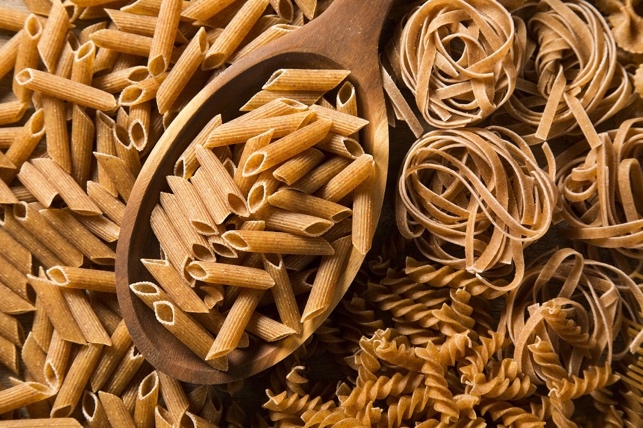New acquaintances are often surprised to find out that I eat pasta (and bread and chocolate and even dessert on occasion) because my life’s career has been spent helping people have healthier diets. Just for the record, YES, you can eat pasta, bread and chocolate and still have a heart-healthy and waistline-friendly diet—it’s all about the portion size and how often you eat it!
I often mention the Mediterranean Diet Pattern in my blogposts, as I did last month. That eating pattern, along with the DASH diet, are two eating patterns that can help you live a longer and healthier life. There’s a hybrid of those two, called the Mediterranean-DASH Intervention for Neurodegenerative Delay diet or the MIND Diet. Both the DASH and Mediterranean Diet have been shown to improve cognition, but neither were developed to slow neurodegenerative diseases like Alzheimer’s. Like the DASH and Mediterranean Diets, the MIND diet emphasizes vegetables, legumes and fruit, but it also recommends including specific foods:
- Green leafy vegetables (kale, spinach, collard greens etc.) daily
- Other veggies (2 daily)
- Berries (twice a week)
- Nuts (5 + a week)
- Olive oil daily
- Whole grains (3+ daily) (whole grain bread, pasta, crackers, oatmeal, popcorn, barley)
- Fish/seafood, especially fatty fish (at least once a week)
- Beans (4 + servings a week)
- Poultry (2+ servings a week)
- One glass of wine daily
The MIND diet suggests you avoid or limit butter and stick margarine, cheese, fried and fast food (less than once a week combined) red meat, sweets and pastries. Where does beef and pork fit in? Personally, I also include lean beef and pork in my diet, as often as poultry, because I feel that it’s important to eat from a wide variety of protein sources. But here’s the real good news—folks in the study who followed the diet “moderately well” cut their risk of Alzheimer’s by 35%; those who strictly followed the diet cut their risk by as much as 53%! If you want to make sure to get calcium-rich foods in your diet too, add low-fat milk and yogurt.
So, getting back to pasta—it’s easy to eat a lot of it! But it’s also the perfect carrier for veggies, legumes, and lean protein. I recommend that my clients choose whole grain pasta and mix their veggies with it when serving—or even cook it together. That way you eat more veggies and less pasta!
Good news about pasta: in a study of adult and children’s eating habits, it was found that those who ate pasta had an overall higher quality diet, greater intake of shortfall nutrients like folate, iron, magnesium and fiber, and lower saturated fat intake. The nutritional icing on this cake is that adult women who ate pasta had lower body weights and waist circumferences.
I’ve found some healthy and quick pasta recipes that fit into the DASH/Mediterranean/MIND eating patterns here:
Cioppino with a Twist: This simple seafood soup has shrimp, mussels and your favorite fish along with a bit of pasta.
Go veggie with this Vegan Spinach and Artichoke Pasta, which calls for cauliflower, spinach and whole grain pasta. Add Northern white beans to the recipe to bump up the protein.
This Power Crunch Pasta Salad has most of the recommended foods in the MIND diet. Just add protein for a complete and balanced meal.
Pasta-stuffed eggplant? Why yes—in this Penne alla Norma Stuffed Eggplant. I would probably add some leftover chicken or lean ground beef to the mix for a one plate meal.
Love peanuts? Find out the latest about eating them when you’re pregnant here.












